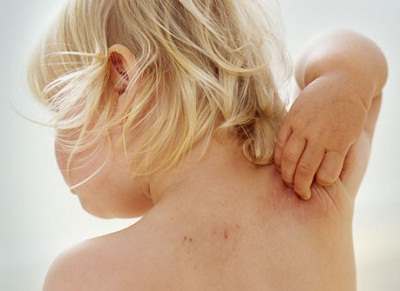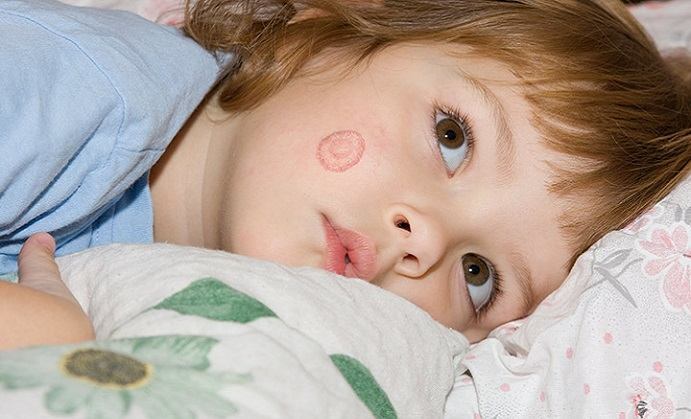Ringworm is an infectious skin disease that is common with children but may also affect adults. Despite the name suggesting that parasites such as worms cause it, ringworm is actually acquired through a fungal infection. “Ringworm” was just a name that stuck due to an early belief that it was caused by worms. It could be described as small circular red patches on the skin that may appear as a rash and thrives in wet and moist areas of the scalp, skin, nails, as well as the groin and other parts of the body. The symptoms vary depending on the location of the lesion, like hair loss when located at the scalp, but a common symptom with ringworm is a painful itch or even blisters around the area of infection. The most common type of ringworm is tinea pedis, more commonly known as athlete’s foot. Other types of ringworm are tinea capitis for infection on the scalp, and tinea corporis for infection on the body.
Symptoms of Ringworm
 Ringworm appears as red, scaly patches or a ring on the skin that may look like a rash and could blister and ooze. The red patches appear to be redder on the outside and as it gets to the center, it looks more like the skin tone of the person who has it. Ringworm also brings out an intense burning itch, and further scratching within the infected area irritates the skin more and promotes the spread to other parts of the body. Scratching also increases the chances of developing ringworm in the nails and inflammation may occur accompanied by pain. Ringworm on the scalp on every occasion brings about hair loss and in some cases, may be permanent
Ringworm appears as red, scaly patches or a ring on the skin that may look like a rash and could blister and ooze. The red patches appear to be redder on the outside and as it gets to the center, it looks more like the skin tone of the person who has it. Ringworm also brings out an intense burning itch, and further scratching within the infected area irritates the skin more and promotes the spread to other parts of the body. Scratching also increases the chances of developing ringworm in the nails and inflammation may occur accompanied by pain. Ringworm on the scalp on every occasion brings about hair loss and in some cases, may be permanent
How Do You Get It?
This fungal infection is very contagious and can be acquired in many ways. You can obtain it from an infected person, animal, even soil. If you share combs or brushes and other personal items like clothes, there’s a good likelihood that you may get it. Places such as locker rooms or pool surfaces are also common places where ringworm might be passed on. Pets such as cats and dogs may also transmit ringworm as they may also carry the infection.
Treatment and Doctor’s Care
 It is easy for a doctor to distinguish ringworm from its obvious appearance and location. If not, a microscopic examination from skin scrapings and samples of the affected area may amount to a diagnosis or rule it out. Ringworm is easily treated with numerous over-the-counter anti fungal creams that are topically applied to the affected area. It is also obvious to keep the infected skin area dry and free of moisture. You should also avoid wearing clothes that may rub against the infected area as it may get irritated and get worse.
It is easy for a doctor to distinguish ringworm from its obvious appearance and location. If not, a microscopic examination from skin scrapings and samples of the affected area may amount to a diagnosis or rule it out. Ringworm is easily treated with numerous over-the-counter anti fungal creams that are topically applied to the affected area. It is also obvious to keep the infected skin area dry and free of moisture. You should also avoid wearing clothes that may rub against the infected area as it may get irritated and get worse.
If you observe an increased swelling, or pus developing around the area of the lesion, or even worsened reddening within a month of self-treatment, it is advisable to consult your physician and seek advanced care.
Do you want to find an effective Ringworm treatment? Check out our top rated Ringworm products











